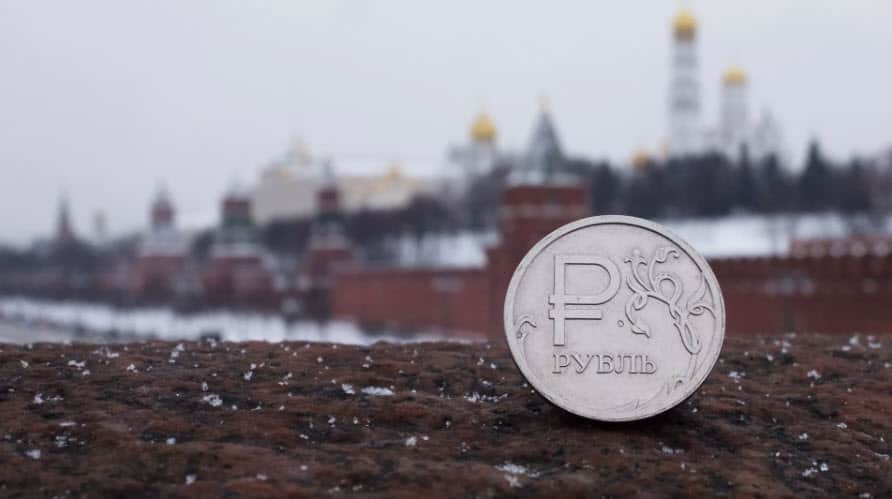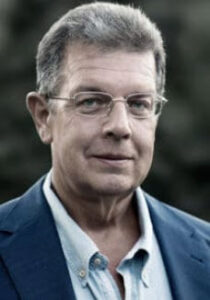De-Coupled, De-Dollarized, & Developing; De-Centralizing as Well

by Paul Goncharoff, chief manager of consulting firm Goncharoff, LLC [1-9-2024 published].
(It is unfortunate that after the collapse of the Soviet Union in December 1991, that many in the United States continued with the same mindset against Russia as was practiced against the USSR. Yes, the USSR was a definite Communist threat. After 1991, Russia went through some very difficult times, yet the Russia of today is unlike the previous Soviet Union. Although the West has been waging a proxy war against Russia via Ukraine since 2014 & before, the Russian economy continues to grow, even while prosecuting the Special Military Operation in Ukraine & having to rise above the many sanctions imposed by the West, especially the United States & its 'allies'. This article & other articles highlight a lot of what has been taking place in Russia, regardless of what the Western propaganda keeps trying to say. — RAD)
We have said goodbye to 2023 when one hundred and seventy-six (176) new large-scale manufacturing factories were commissioned and are now operating throughout the Russian Federation.
Simply for comparison's sake in 2022 just over one hundred (100) new plants were commissioned. It is worth noting that all these new manufacturing plants are state-of-the-art, with the latest equipment and systems geared to resolving any shortages due to imposed trade restrictions. Most if not all of these enterprises have introduced new technologies, automated production processes and have improved energy efficiencies resulting in improved product quality, shortened production time, and reduced production costs.
In the not-too-distant past, most of the large plants in Russia were built in large cities or regional centers, however today the picture is radically different with many of these new facilities being built in what was referred to as the peripheries or hinterlands. This has in turn transformed and is transforming the infrastructure of much of Russia that was marginalized in the past. New roads, logistics, energy, and transportation accessibility to places that were recently considered long forgotten are continually improving.
Import substitution and reducing dependence and vulnerability to imports are only some of the reasons for the broad distribution of these new plants. The key reasons are to create opportunities and modernize industrial and infrastructural strengths throughout the many regions of the country, a self-transforming growth curve.
Many of these new facilities are involved in key industries such as automotive, energy, food industry, health, and information technologies. This is due to both the needs of the market today and the government's import substitution objectives. Some say that the record number of plants opened this year is a phenomenon. In contrast, others say it is just another logical phase in growing the economy and strengthening the investment climate in Russia. Some analysts even go as far as to say it is "De-Lovely".
In 2023, several car manufacturing plants were opened, from EVs to high-efficiency gas and diesel such as "Russky Avto", "AutoMaster", "Electromobiles Manufacturing Rus", as well as plants in Togliatti and Novokuznetsk. In Ulyanovsk, the new Sollers Cargo facility launched full-cycle production of Sollers Argo compact light-duty trucks this past September, and the Chelyabinsk Urban Electric Transport Plant was opened in the Leninsky district of Chelyabinsk in March of this year.
Foreign investors continue to show interest in developing production in Russia. In 2023, several plants with foreign capital were opened. A 10,000 square meter facility called "Autotechnika" was opened through German investment, specializing in producing automotive components. Investors from "friendly countries", even Japanese and certain EU investors have also made significant investments in localized high-technologies and manufacturing.
Part and parcel of plans to enhance production in Russia is the development of the information technology sector. New software development centers for computers and electronics. Manufacturing plants are creating new jobs, accelerating the development of innovations in IT technologies, and increasing exports of "Made in Russia" products.
In November 2023 the ICL motherboard production plant was launched in Tatarstan making 300 thousand motherboards a year with expansion plans for 1 million per year. This plant produces computing equipment, printed circuit boards, and surface printed circuit boards with the installation of foreign and domestic processors "Baikal and "Elbrus".
An assembly and testing complex was launched at the "LEPSE" plant, one of the largest machine-building enterprises producing electrical equipment for aviation. This new facility was created "from scratch" within 9 months.
In March of 2023, "Aeromax LLC" started pilot and serial production of unmanned aerial systems. In particular, the company produces helicopter-type unmanned aircraft systems designed for cargo transportation and flights in severe weather conditions. The facility now employs more than 2,000 people.
Medicine and pharmaceuticals have not been left out either, the city of Saransk this past March saw a large pharmaceutical plant for the production of active pharmaceutical components opened producing 150 types of substances. Here anti-tumor drugs are created and molecules for synthetic antibiotics are produced. In Kaliningrad, a new pharmaceutical plant opened in 2023 will produce a wide range of drugs, including antibiotics, antiviral and immunomodulatory drugs.
New plants opened in Russia in 2023 have created a significant number of jobs and a variety of vacancies. The amount of labor required to work at these plants is significant. Difficulties in shipping and paying for goods abroad have strongly spurred entrepreneurs to launch domestic businesses. The past year has also seen several now-obsolete facilities closed not only for reasons of uneconomic modernization and outdated production capacities but also because of their negative impact on the environment. These were replaced by other production facilities, possibly in other regions that meet all requirements.
Looking ahead to 2024 and beyond it is apparent that vast opportunities are open to further develop the transportation network, building roads, airports, and railways. Consider that in 2023 More than 31,000 km of federal, regional, and local roads were built across Russia, with over 188 mln sq m of asphalt/concrete laid in the regions.
This all contributes to improving decentralized transportation accessibility, the development of logistics, and the creation of new jobs to improve the quality of life and income levels of the population.
Paul Goncharoff
 Native to Manhattan, Paul Goncharoff has lived and worked in Asia, the MENA region, Europe and, since the late 1990s, based full-time in Russia, achieving a solid reputation in the Russia/CIS business arena. Principal of Goncharoff LLC, he is dedicated to business management, development, integration, and consulting in relation to Russia/FSU markets, working with Russian and non-Russian companies wishing to operate in the Russian Federation and outside Russia, personally managing multicultural business, operations, and personnel in urban, regional, and remote areas of Russia/FSU. Paul Goncharoff: I am completely connected to Russia, to it's reality is a very good interview of Paul from 7/13/2023, although you will need to use a browser that allows translating the Russian text to English, unless you can read Russian.
Native to Manhattan, Paul Goncharoff has lived and worked in Asia, the MENA region, Europe and, since the late 1990s, based full-time in Russia, achieving a solid reputation in the Russia/CIS business arena. Principal of Goncharoff LLC, he is dedicated to business management, development, integration, and consulting in relation to Russia/FSU markets, working with Russian and non-Russian companies wishing to operate in the Russian Federation and outside Russia, personally managing multicultural business, operations, and personnel in urban, regional, and remote areas of Russia/FSU. Paul Goncharoff: I am completely connected to Russia, to it's reality is a very good interview of Paul from 7/13/2023, although you will need to use a browser that allows translating the Russian text to English, unless you can read Russian.